What is Labor Trafficking?
The Trafficking Victims Protection Act (TVPA) of 2000, the first comprehensive federal law to protect against human trafficking, defines labor trafficking as the recruitment, harboring, transportation, provision or obtaining of a person for labor or services, through the use of force, fraud or coercion for the purposes of subjection to involuntary servitude, peonage, debt bondage or slavery (22 USC § 7102).
Retail buyers, corporate purchasers, subcontractors and individual consumers looking to drive profits and minimize costs fuel the demand for labor trafficking. Both legal and illicit enterprises engage in trafficking as a means to enhance the bottom line, sometimes unwittingly. For this reason, it is important to be cognizant of supply chains and practice responsible sourcing.
What does labor trafficking look like?
Agriculture, construction, manufacturing, service, hospitality, fishing and forestry industries are all known to engage in labor trafficking.
Look around you. This means the restaurant or nail salon you frequent may “employ” forced laborers. Peddlers, beggars and traveling sales crew members could be victims of traffickers. The nanny, maid or elder care practitioner working next door might be trapped in domestic servitude. The landscaper or janitor tending the office building or hotel across the street could be held against his will. Forced laborers are found in all types of settings including carnivals, drug sales and cultivation, fairs and war zones practicing child recruitment.
Forced laborers are at high risk of being placed in undesirable jobs, most requiring little skill. Children are assigned tasks suitable for tiny fingers. Victims experience deplorable working conditions with low light, repetitive motions, grueling manual labor, poor ventilation, hazardous conditions, unsanitary working quarters and harsh climates putting them at risk of heatstroke or hypothermia. Perpetrators demand excessive work hours, allow minimal rest and provide meager food for little or no pay.
The Damage Done
Victims rescued suffer a range of physical and mental health issues.
During captivity victims may suffer limbs lost by frostbite, accidental injuries caused by fatigue or wounds inflicted by violence. Survivors emerge with scars, hearing loss and impaired eyesight. Their bodies show signs of exhaustion, malnourishment and skin infections. Children experiencing severe abuse and neglect may endure stunted growth, rotting teeth and reproductive issues later in life. Survivors are often plagued with dizzy spells, headaches, loss of appetite, fatigue, dental problems, abdominal pain, cardiovascular or respiratory problems or chronic back pain, long after being rescued.
The mental health consequences of victimization tend to remain even after physical healing has taken place. Shock, disbelief, disorientation, confusion and denial are some of the immediate reactions to being trafficked. Prolonged consequences include a profound sense of helplessness, depression and humiliation. Anxiety disorders including post-traumatic stress disorder (PTSD), phobias and panic attacks. Eating and sleeping disorders are prevalent.
